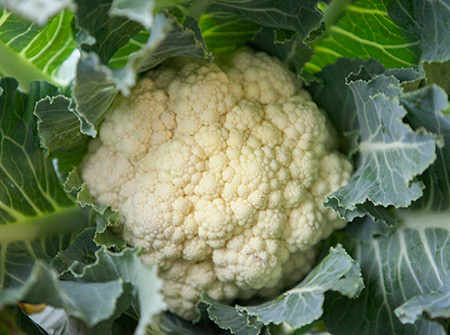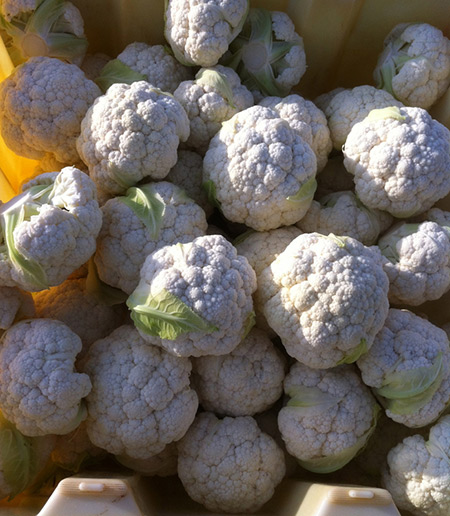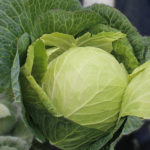Storing cauliflower
Cauliflower is a valuable dietary product, indispensable for many diseases. Its cellular structure, thinner than that of a white-headed relative, contains too little coarse fiber. Therefore, storing this plant for fresh consumption or subsequent culinary processing is much more difficult and requires special attention.

The heads of cauliflower that have reached technical ripeness are stored for three months in special storage facilities, where a constant temperature of 0 ° C and a relative humidity of 90 to 95% are maintained. For long-term storage, select healthy, well-developed heads that do not have mechanical damage and belong to the varieties of the autumn ripening period.
This is done in large and medium-sized vegetable farms that cultivate this crop. But is it possible to preserve cauliflower at home without resorting to processing?
There are many popular storage methods that have both advantages and disadvantages.
In the cellar
In a room that maintains an air temperature of around 0 ° C and a relative humidity of about 95%, cauliflower can be successfully stored for up to one and a half months. The heads should be:
- without damage;
- cleared of leaves;
- with cut roots.
They are usually placed in wooden or plastic boxes and covered with plastic wrap. Cabbage stored in this way must be checked regularly to prevent the spread of emerging diseases.
Individual heads of cabbage can be suspended by stubs. At the same humidity and temperature, they will retain their fresh appearance for up to three weeks. You just need to make sure that the heads do not come into contact with each other.

In the fridge
The heads of cabbage, deprived of roots and leaves, are placed in plastic bags - one for each bag. Or simply wrapped in plastic wrap. The cauliflower prepared in this way is removed to the bottom shelf of the refrigerator and stored for a week.
In the freezer
The cauliflower heads are disassembled into inflorescences, washed thoroughly in running water and allowed to dry. Then it is poured into freezer bags and placed in the freezer. In another version, it is pre-boiled by keeping it in boiling water for about 5 minutes. Frozen cabbage lasts for a whole year without problems, but after thawing it must be eaten immediately or cooked.
On the balcony
If there is a glazed and sufficiently insulated balcony or loggia where it is possible to maintain a positive temperature, you can store cauliflower in boxes or boxes. For insurance, it is better to overlay them with polystyrene foam, polyethylene foam or other similar heat-insulating material. Even an old quilted jacket or blanket will do. The heads themselves are also recommended to be wrapped in newspapers, loose paper, cling film. This will not only serve as additional insulation, but will also allow you to isolate the heads of cabbage from each other in case of incipient rot.
Growing storage
Small heads, up to 5 cm in diameter, are carefully dug out together with a small amount of soil on the roots. They are transplanted into pre-prepared boxes, placing them very tightly - up to forty plants per square meter. They are covered with earth almost to the lower leaves - by 10 - 15 cm. Main conditions:
- no light;
- ambient temperature not higher than 10 ° C;
- relative humidity about 95%.
This way you can store cauliflower for up to four months or longer, depending on the variety. It is especially suitable for cabbage that has not had time to finally ripen in the garden.








